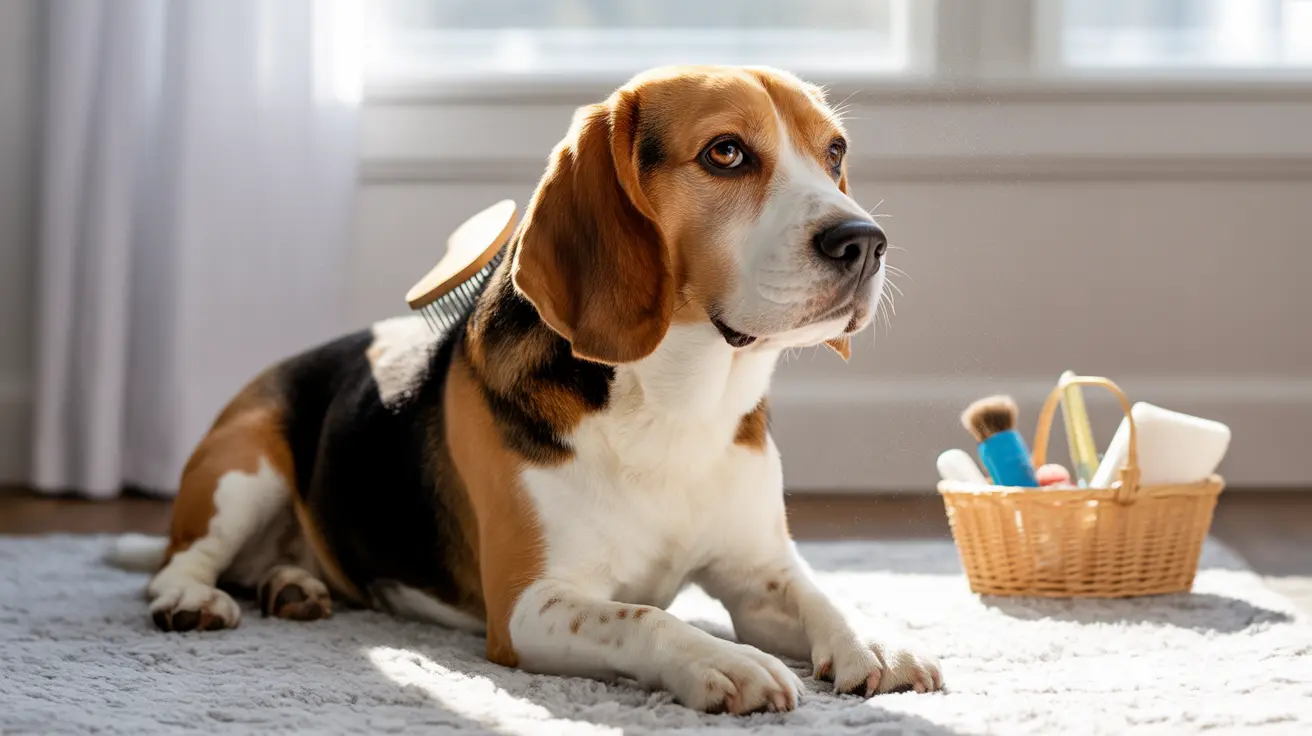Beagles are beloved family pets known for their friendly personalities and distinctive appearance. However, many potential owners and current Beagle parents have questions about their dogs' coat maintenance, particularly regarding malting (or shedding). This comprehensive guide will explore everything you need to know about Beagle malting patterns, causes, and management strategies.
Understanding Beagle Coat Structure
Beagles have a distinctive double coat consisting of two layers: a tough, weather-resistant outer coat and a softer, insulating undercoat. This coat structure serves an important purpose, protecting these hunting dogs from various weather conditions and environmental challenges. Both layers contribute to the malting process throughout the year.
Seasonal Malting Patterns in Beagles
While Beagles shed year-round, they experience two major malting seasons annually: spring and fall. During spring, they shed their heavy winter coat to prepare for warmer weather. In fall, they shed their summer coat to make way for a thicker winter coat. These seasonal changes are triggered by variations in daylight hours and temperature.
Indoor Beagles may experience slightly different malting patterns due to artificial lighting and controlled temperatures, which can affect their natural shedding cycle. This means some indoor Beagles might molt more consistently throughout the year rather than following strict seasonal patterns.
Managing Your Beagle's Malting
Regular Grooming Routine
The key to managing Beagle malting is establishing a consistent grooming routine. Brush your Beagle 2-3 times per week during regular periods, increasing to daily brushing during heavy malting seasons. Use appropriate tools such as:
- Slicker brushes for removing loose undercoat
- Rubber grooming mitts for general maintenance
- Deshedding tools for heavy malting periods
Bathing and Coat Care
Regular bathing every 4-6 weeks helps manage shedding and maintain coat health. Use dog-specific shampoos designed for double-coated breeds, and avoid over-bathing, which can strip natural oils and worsen malting. Always thoroughly dry your Beagle after baths to prevent skin issues.
Health Considerations and Malting
While malting is natural, excessive or unusual shedding patterns may indicate health issues. Watch for signs such as:
- Patchy hair loss
- Skin irritation or redness
- Excessive scratching
- Bald spots or thinning areas
These symptoms warrant a veterinary check-up, as they could indicate underlying conditions like allergies, hormonal imbalances, or nutritional deficiencies.
Diet and Nutrition Impact
A balanced diet plays a crucial role in healthy coat maintenance and normal malting patterns. Ensure your Beagle's diet includes:
- High-quality protein sources
- Omega-3 and omega-6 fatty acids
- Essential vitamins and minerals
- Adequate hydration
Frequently Asked Questions
Do Beagles shed a lot throughout the year or only during specific seasons?
Beagles shed moderately throughout the year but experience heavier malting during spring and fall seasons. The amount can vary between individuals, with some Beagles shedding more than others.
What causes Beagles to shed or malt more heavily during spring and fall?
Seasonal malting is triggered by changes in daylight hours and temperature, prompting the dog's body to adjust its coat thickness for the upcoming season. This is a natural process that helps maintain appropriate insulation year-round.
How can I effectively manage and reduce Beagle shedding at home?
Regular brushing, proper bathing schedule, maintaining a healthy diet, and using appropriate grooming tools are key to managing Beagle malting. Consistency in grooming routine is essential, especially during heavy shedding seasons.
Are there health issues or allergies that can cause abnormal shedding in Beagles?
Yes, several health conditions can cause abnormal shedding, including hormonal imbalances, allergies, skin infections, and nutritional deficiencies. Any sudden changes in shedding patterns should be evaluated by a veterinarian.
At what age do Beagle puppies start to shed their puppy coat?
Beagle puppies typically begin shedding their puppy coat around 6-12 months of age. This transition period can vary between individuals and may take several weeks to complete as the adult coat develops.
Conclusion
While Beagle malting is a natural and ongoing process, understanding its patterns and implementing proper management strategies can help keep it under control. Regular grooming, good nutrition, and attention to your dog's overall health will ensure your Beagle maintains a healthy, beautiful coat while keeping excessive shedding at bay.






